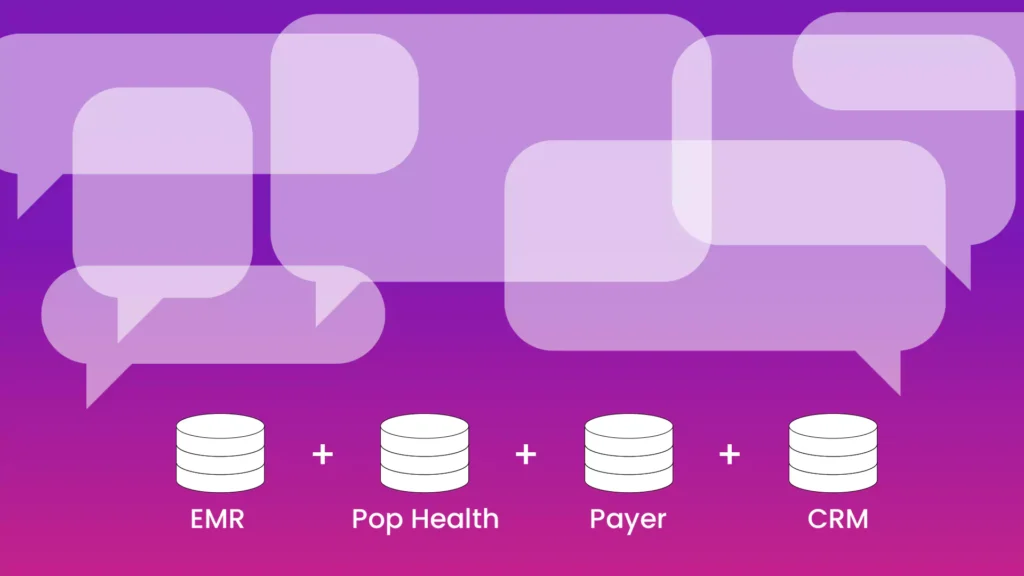After researching numerous vendors, you have now likely determined which ones have the specific features that fit your patient communication solutions criteria. The next step of the process is to set a realistic timeline with your internal team, which will include the key stakeholders and decision-makers.
Evaluating patient communication solutions? Set up a timeline.
Implementing a patient communication solution can be a lengthy process that involves a number of departments across your organization. This is why it’s critical to outline the necessary steps and phases that go into a successful implementation right at the beginning. In order to help keep everyone accountable for their specific roles and ensure steady progress in this purchase decision, it’s best to create a timeline filled with deadlines you can easily refer back to at any moment.
Once you establish an estimated timeline with your potential vendors, make sure to keep track of each one. By doing so, you will be able to compare each process and determine how the vendors may or may not align with your company’s goals and expectations. Ultimately, this presents the perfect opportunity to ask yourselves internally: Which vendor offers the timeline that matches our needs the best?
Now is the time to find out.
Considerations to keep in mind when creating your timeline for communication platform adoption
Vendor response time
Every vendor has a different response time, so if you are looking for quick answers, state that upfront when you contact a company. Some vendors will respond that day, while others may take a little more time. While the response time is not a direct indication of if their patient communication solution is right for your needs, it may help you recognize the sort of response styles you are both seeking and expecting from a vendor. Ask yourselves: how quickly do we need things done?
Vendor Selection
When building out your timeline, make sure you include ample time for your organization to make a final decision on a communication system. This includes getting buy-in from stakeholders, ensuring the budget is in place, and working with your procurement team. Additionally, you may have numerous other steps depending on your organization’s procedures. It’s best to allocate more time than you think you may need just in case something comes up.
Contracting time
Once you have selected your vendor of choice, you still need to put the contract in place. This will take time as it involves reviewing both the business and legal terms. How long this takes will depend both on your organization and the patient communication platform vendor. Vendors who typically work with organizations like yours are more likely to have standard terms that will be appropriate for your organization and will require little to no revisions – accelerating the entire contracting process. On the other hand, if a vendor doesn’t typically work with organizations like yours, it could take a bit more time.
Implementation timeline
Every implementation will vary depending on your company’s needs. Ask potential vendors for estimates based on their experiences with companies of your size and with your EHR. Think about the major milestones throughout the implementation journey and how many weeks each step may take. Does your organization need the patient communication platform up and running immediately? How quickly can the vendor get you set up for success? This is something to think about.
Go-Live
Go-Live signals the end of your implementation period and is critical for the successful adoption of patient communication solutions by internal users at your organization. This timeframe should include ongoing check-ins with your implementation and success teams to ensure questions are answered and the product is operating as outlined in your Statement of Work. This is also an important time to identify any gaps in understanding and ensure the processes you have developed to support the new product operate as intended. Are there any questions you still have? Any features you would like to learn more about? Now is the time to ask those questions.
The key steps and milestones in the communication system adoption process
In order to stay on track with the patient communication platform adoption, it’s important to establish key milestones and phases throughout the entire process. Think about what tasks go into each step and how many weeks the vendors typically plan to allocate for each part.
Here we have outlined the general processes and project milestones that are part of the journey:
Onboarding
The onboarding process is really the first step in the adoption process and is likely to be completed in the first few weeks with your vendor. During this process, your vendor’s onboarding team will work with you on a number of different items, including:
- client orientation
- establishing initial VPN connectivity
- providing introductory training
- determining location mapping structure
After your first initial onboarding meetings, you should have an updated project plan, an introduction to your project teams, and an overview of the end-to-end process for setting up the patient communication platform in your environment. Additionally, the vendor will have more clarity on your patient communication goals, which can help shape the next step of the project: the build.
Build
Once the Location Mapping template is completed, the VPN connectivity is established, and introductory training has begun, the communication system vendor can start building the Pilot Practice for your departments and related phone lines.
Throughout this part of the process, you will likely also review what you have learned thus far in terms of what communication settings and features are available to you. What automations would you like to enable? Do you have any specific custom messaging needs? These are the type of questions you will be going through at this time.
Here is a general overview of what the building process includes:
- initial practice
- location
- automation/messaging
- technical build
Testing & Acceptance
The testing and acceptance process is all about testing the communication system. The first part of this phase will be Unit Testing, which is designed to ensure that all aspects of the integration between you and your EMR function as expected. The vendor may test things like patient creation, demographics updates, and portal enrollment status in alignment with your Technical Statement of Work.
Once the unit testing is complete, the vendor will then review the user acceptance testing (UAT) process. This allows the vendor to test the Appointment and Inbound Message Automations you have chosen to implement. The goal here is to ensure Automation works as anticipated, focusing on ensuring patient language and communication preferences are referenced correctly, links work, and events behave as expected. After the UAT is complete, you will move on to the production build phase.
Generally, here is what you can expect during the testing and acceptance phase:
- technical unit testing
- operational workflow testing (if necessary)
- user acceptance testing
- culminating with client approval to move the vendor’s accepted build into the client’s production environment
Production Build and Cutover
At this point in the process, the accepted build is moved into production. Your vendor will configure critical practice functionality, including building your automation filters, establishing key practice settings, adding staff and manager users, and more.
This part of the process is really about the “Technical Go-Live.” The process for being technically live includes enabling the integration interface, uploading your past patient file, and completing the future appointment upload. Keep in mind there should be at least two weeks time between the technical go-live and the operational go-live to allow time to identify any data mismatches and validate data integrity ahead of enabling Automations to send to your patients.
Your vendor will also schedule several Go-Live Check-ins to ensure the communication system is working properly. These are typically designed to help troubleshoot anything that comes up the first few weeks after Go-Live.
Go-Live
It’s time for operational go-live. The patient communication platform is ready to be used! During your pre-scheduled go-live check-ins, you will have the opportunity to connect with your vendor and confirm your automations are sending correctly. This is a great time to ask any remaining questions you may have.
As part of this transition, the vendor should also provide you with instructions on how to contact support and equip you with the resources you will need to be successful.
Example of Project Timeline of Project Milestones for Enterprise Health Systems
Example of Project Timeline of Project Milestones for Non-Enterprise Health Systems
Which patient communication vendor offers a timeline that best matches your needs?
The vendors you are currently evaluating have sent you their project timelines. It’s now time to review each one. Now that you can identify the key phases and milestones that are crucial to effective patient communication solutions, you will have a better idea of what the entire process should roughly look like.
Do any of the vendor’s timelines match up with your internal timeline? Does one of them align with your internal timeline more so than the others? These are the type of questions to ask at this time.
The journey for a patient communication platform continues
Remember this is just the fourth step in the buyer’s journey. Now that you have reviewed the initial criteria to consider when evaluating patient communication solutions, identified key stakeholders involved, researched vendors, and learned how to set up a realistic timeline, you are well on your way to the next step of the journey: evaluating vendors.
WELL Health® Definitive Buyer’s Guide to a Patient Communication Platform – a comprehensive outline of the buying process divided into six easy steps. Reviewing this guide will increase the odds that you will make the right vendor selection for patient communication software. ♥





